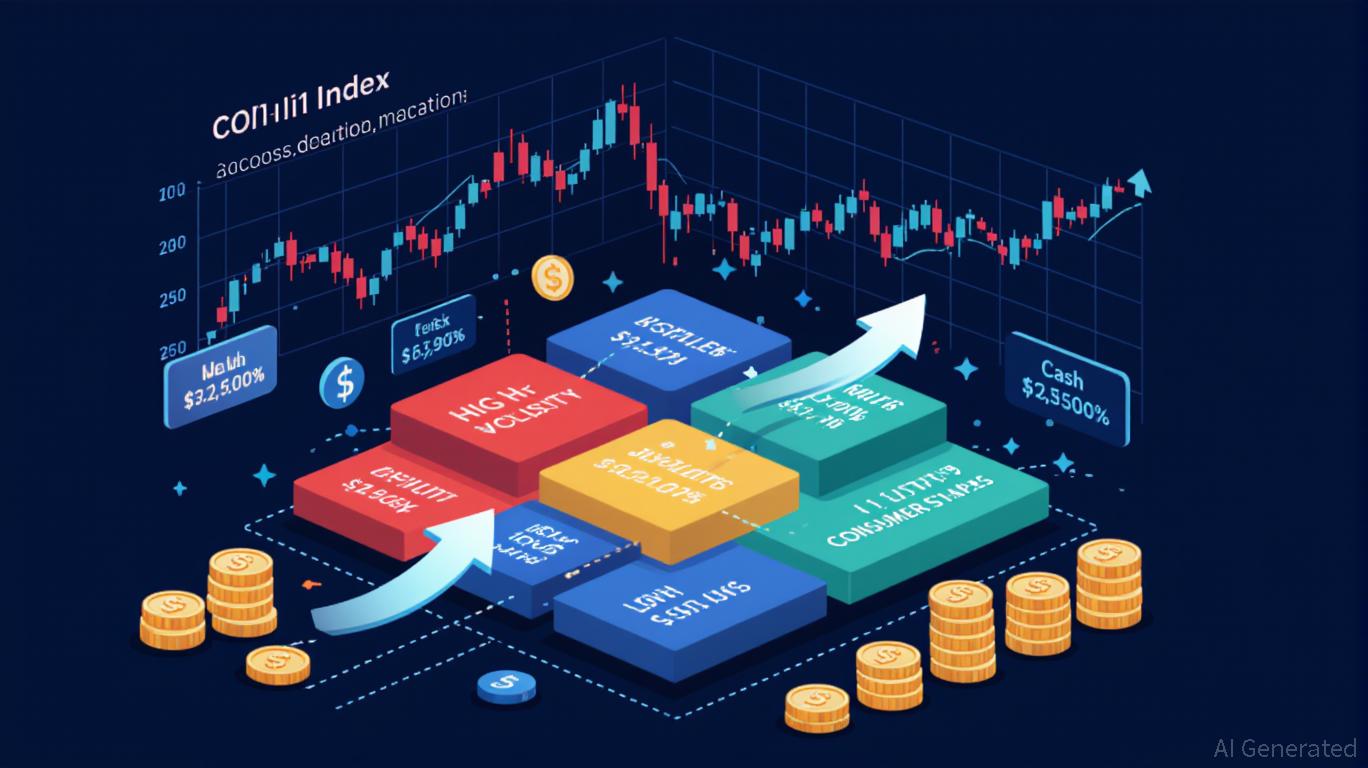Ethereum News Update: Ethereum Drives Institutional Transformation with Amundi Tokenizing Major Fund
- Amundi tokenizes a money market fund on Ethereum , signaling institutional adoption of blockchain-based asset management. - Ethereum's upgrades like PeerDAS and Bhutan's $970k ETH staking highlight growing institutional trust in its infrastructure. - CoinShares' $250M Bitcoin Miners ETF and global digital ID initiatives underscore tokenization's role in modernizing finance. - Ethereum's $3,100 price resistance and technical indicators suggest potential for long-term resilience amid scaling improvements.
Amundi Pioneers Money Market Fund Tokenization on Ethereum
Amundi, recognized as Europe's largest asset manager, has taken a notable step forward in blockchain innovation by launching a tokenized money market fund on the Ethereum network. This initiative signals a growing embrace of digital assets by major financial institutions and reflects the increasing momentum within Ethereum’s ecosystem, where continual upgrades are attracting institutional players to the world of tokenization.
Currently, Ethereum is testing resistance near the $3,100 mark and is undergoing significant enhancements such as the PeerDAS upgrade, which aims to boost both data availability and scalability. These technical improvements are expected to further strengthen Ethereum’s role in supporting tokenized asset management solutions.

Amundi’s adoption of Ethereum leverages the network’s robust infrastructure, including advanced staking options and institutional-grade services. A recent example is Bhutan’s $970,000 ETH staking project through Figment, illustrating how both governments and large organizations are weaving Ethereum into their financial frameworks. These developments highlight Ethereum’s expanding reputation as a secure, transparent, and efficient foundation for managing digital assets.
Ethereum’s Market Performance and Technical Outlook
Ethereum’s price action mirrors its evolution as a key financial infrastructure. Although ETH is facing short-term resistance at $3,100, technical indicators such as the RSI and MACD point to the possibility of a price recovery, with bullish investors eyeing the 50-day EMA at $3,468. These market signals, combined with ongoing network upgrades, reinforce Ethereum’s position as a leading platform for tokenized finance.
Broader Industry Trends: Tokenization and Innovation
Amundi’s move is part of a larger industry shift toward blockchain-powered asset management. For instance, CoinShares is ramping up its U.S. presence by introducing innovative offerings like the Bitcoin Miners ETF, which has already attracted $250 million in assets. This trend underscores the advantages of tokenization—greater liquidity, enhanced transparency, and improved cost efficiency—which are drawing interest from both institutional and retail investors.
Global Adoption and Modernization Efforts
The tokenization of money market funds fits within a worldwide push to modernize financial systems. Bhutan’s transition of its digital ID system and cryptocurrency payment infrastructure to Ethereum demonstrates how blockchain technology can streamline governance and economic processes. Amundi’s initiative may inspire other asset managers to explore tokenization, especially as Ethereum’s scalability upgrades lower transaction fees and broaden access.
Technical Progress and Institutional Confidence
Despite ongoing price fluctuations, Ethereum’s continuous technical progress and increasing institutional adoption point to its long-term strength. The PeerDAS upgrade, for example, is designed to resolve data availability challenges—an essential requirement for supporting large-scale tokenized assets. Additionally, actions such as Vitalik Buterin’s philanthropic crypto contributions and Bhutan’s staking efforts reflect a deepening trust in Ethereum’s security and dependability.
Conclusion
Amundi’s decision to tokenize a money market fund on Ethereum demonstrates a strategic alignment with the network’s technological advancements and the broader trend of institutional adoption. As Ethereum continues to enhance its capabilities, it is poised to become a foundational element of the digital asset landscape, paving the way for innovative financial products and services.
Disclaimer: The content of this article solely reflects the author's opinion and does not represent the platform in any capacity. This article is not intended to serve as a reference for making investment decisions.
You may also like
Ethereum News Update: Avail’s Nexus Bridges Liquidity Across 12 Blockchains, Tackling Fragmentation
- Avail's Nexus Mainnet launches as a cross-chain execution layer unifying liquidity across 12 blockchains including Ethereum and BNB Chain. - The intent-solver architecture automates optimal routing while aggregating liquidity from multiple chains through Avail's data availability layer. - Developers gain simplified cross-chain integration via SDKs and APIs, enabling real-time collateral pools and intent-based trading without managing bridges. - With Solana integration planned and Infinity Blocks roadmap

Hyperliquid News Today: Hyperliquid Adopts Tidewater’s Strategy to Streamline Crypto Risk Management
- Hyperliquid introduces automated downsizing to stabilize HYPE, which dropped 52% from its peak. - Strategy mirrors Tidewater Renewables' capacity management, balancing short-term volatility with long-term stability. - Hyperliquid Strategies DAT plans $300M HYPE buybacks to inject liquidity and institutional-grade risk frameworks. - Market faces $1.89B+ liquidation risks if Bitcoin/Ethereum surge, prompting automated buffers to prevent cascading sell-offs. - Approach reflects growing DeFi adoption of algo
The Unexpected COAI Price Decline: Key Lessons for Investors from the November 2025 Market Turbulence
- COAI Index's 88% November 2025 collapse stemmed from C3.ai governance failures, regulatory ambiguity, and panic-driven herd behavior. - Market psychology amplified losses as investors overreacted to AI sector risks, ignoring fundamentals and triggering liquidity crises. - Diversification, cash reserves, and AI-driven tools helped mitigate risks, emphasizing long-term strategies over speculative hype. - The crisis exposed dangers of overreliance on AI/DeFi narratives, urging disciplined, diversified portf

CME Suspension: Global Market Vulnerabilities Revealed by Thermodynamic Constraints
- CME Group halted Globex trading on Nov 28, 2025 due to CyrusOne cooling system failure in Chicago, freezing 90% of global derivatives markets. - The outage caused erratic price swings in gold/silver and disrupted EBS forex platforms, exposing vulnerabilities in third-party data center reliance. - Despite post-holiday timing softening immediate impact, the incident highlighted systemic risks from thermodynamic limits in AI-era infrastructure. - CME faces pressure to build redundant systems as it expands c
